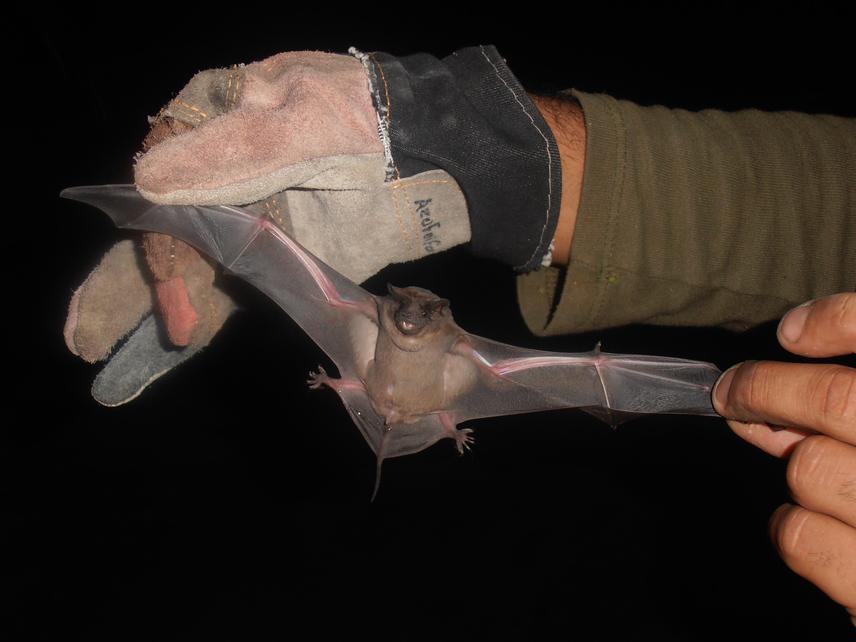Yara Azofeifa Romero
The aim is to evaluate the consumption of agricultural pests by insectivorous bats and to estimate the degree of exposure of these animals to pesticides by consumption of contaminated insects.

Captures of Molossus molossus in its artificial shelter (January 2014).
Insect-eating bats that live in or near agricultural crops could function as natural insect pest control agents, helping to reduce the need to use large amounts of pesticides. In Western Llanos of Venezuela, the agricultural areas are inhabited by numerous species in insectivorous bats that could be important consumers of pest insects. Unfortunately, when eating these insects, they run the risk of also ingesting pesticides present in insects, and eventually, it could occasion mortality in populations of bats. No formal study have evaluated whether particular species of bats are eating insects that cause economic losses to agriculture in Venezuela, and no research efforts have been directed to assess bats’ exposure to pesticides by consumption of contaminated insects. This is so, even though in Venezuela the application of agrochemicals is dramatically high. However, due to growing interest in reducing investments on pesticides and minimizing their negative impacts on human’s health, the current interest is to implement developing alternatives that consider pest management strategies safe to human health and that guarantee the conservation of biodiversity together with sustainable agricultural production.
For these reasons, this research project aims to evaluate consumption of agricultural pests of corn and rice crops by insectivorous bats in the States of Portuguesa and Cojedes, two of the states that serve as major agricultural producers of these items and where pesticides are used intensively. Therefore, additionally, we will estimate the degree of exposure of these animals to pesticides through consumption of contaminated insects. For which we propose:
(1) detection and identification of insectivorous bats that have activity within the maize and rice fields using ultrasound detection
(2) traditional diet analysis and identification of pest insects by bar-coding analysis based in samples from faeces of animals captured,
(3) the use of gas-liquid chromatography to identify and quantify pesticide residues in complete samples of insects and faeces or hair of bats.
We believe that this work will help to evaluate the ecological services that insectivorous bats can provide to agricultural systems in the Western Llanos of Venezuela and, at the same time, will explore the potential risks that these mammals are exposed to by the intensive use of pesticides in field crop.
Header: DNA extraction from faeces samples of AIB at Laboratoire d'Ecologie Alpine of Université Joseph Fourier, Francia.